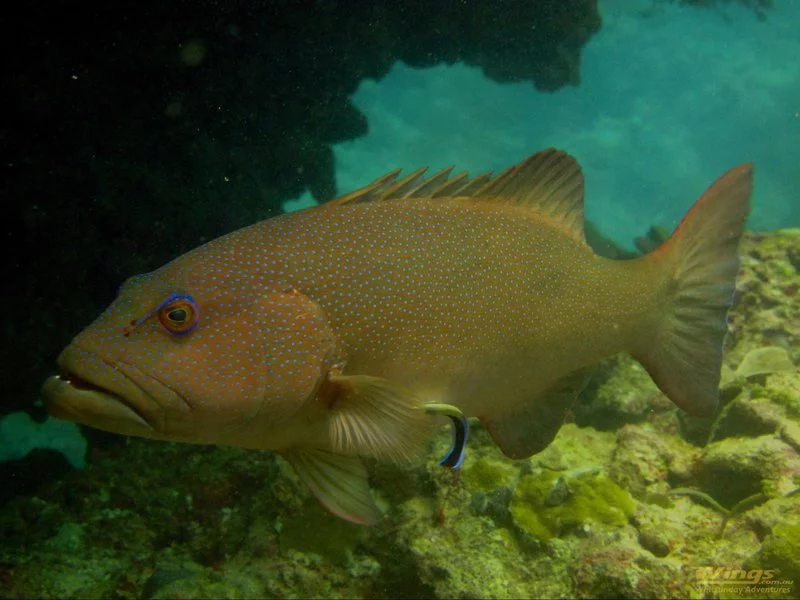Coral trout is the name given to a number of different reef fish species in the family serranidae which also includes groupers, cod and the much smaller anthias. The name coral trout came from European settlers, they had a habit of naming animals after those they resembled at home. As coral trout have spots along their bodies like the fresh water brown and rainbow trout and they lived on coral reefs, so came the common name, coral trout. These fish are widely considered one of the best eating fish out there and are highly sought after and prized for their flesh by recreational and commercial fisherman all over the world. Some of the more common species we see in Australian waters are the bar-cheeked coral trout, common coral trout and the blue spot coral trout.
The different species of coral trout can be found in the warm tropical waters of the Indo-West Pacific from southern Japan through South East Asian and down to Papua New Guinea and Northern Australia and east to the Solomon Islands and Fiji. Their preferred habitat is coral reefs both on the coast and around inshore islands like the Whitsundays, at depths from 3 meters down to 100 meters on the deeper reef slopes.
The general appearance of the more common coral trout species is an overall red/pinkish colouring with bright blue spots over the length of their bodies. There are a few differences between the species though. Bar-cheeked coral trout have spots on the sides of their head which have become elongated and resemble bars, hence the name. The common coral trout, which is the most widely distributed in the Great Barrier Reef region, has a lot of variation in its colouring. They can be red, brown, green or orange and all will have a distinct blue ring around their eyes. The blue spot coral trout has 3 different colour forms. Its common form is red or olive to brown/black with blue spots. The second form is known as the footballer and many people think it is a different species as it looks so different. In this form the blue spotted trout has whitish scales with black saddles running down its back and yellow fins. There is also an intermediate phase which occurs when a fish is changing from the footballer colouring to the common phase.
Appearance is not the only thing coral trout can change, they are what are what is known as protogynous hermaphrodites. This means that they begin their life as a female complete at least one breeding cycle while female and then when they are between 3-7 years old they will change into males. When breeding coral trout will gather in large numbers, sometimes over 100 fish, quite the opposite to their normally solitary lifestyle. In these breeding aggregations the males will take a territory on the bottom and will attempt to woo any female who swims through. If a female accepts him they will start a kind of dance where they will swim rapidly upwards and release their eggs and sperm simultaneously. When fully grown coral trout can reach about 1 meter in length and weigh around 25 kilograms.
Like other species in the serranidae family, coral trout are predatory fish and have large mouths with rows of sharp teeth. They feed during the day and are most active at dusk and dawn, when hunting they will use a number of different methods. In some cases they will wait motionless on the bottom and ambush unsuspecting prey as they swim past or they will move higher up the water column and swim slowly along until they find something to eat and attack. The main diet of adult coral trout is smaller fish, they will even eat juvenile coral trout if they are unlucky enough to cross their path. Juveniles will feed on small crustaceans and sometimes squid.
Here on the fringing reefs of the Whitsundays coral trout are quite a common site. If you are after a taste of these world renowned fish you're in luck, here on the fringing reefs of the Whitsundays coral trout are quite a common site. They can be caught by both line fishing and spearfishing or just enjoyed as a beautiful fish to see on a snorkel.

